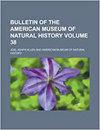Taxonomy and Phylogenetics of Nanometinae and Other Australasian Orb-Weaving Spiders (Araneae: Tetragnathidae)
IF 3.4
2区 环境科学与生态学
Q1 BIODIVERSITY CONSERVATION
Bulletin of the American Museum of Natural History
Pub Date : 2020-02-28
DOI:10.1206/0003-0090.438.1.1
引用次数: 8
Abstract
ABSTRACT The spider family Tetragnathidae Menge is a cosmopolitan, relatively well-studied spider clade with some members readily identifiable by their elongate chelicerae and/or their horizontal orb webs. It has four recognized subfamilies—Tetragnathinae, Metainae, Leucauginae, and the Australasian endemic Nanometinae—although many genera remain unassigned to subfamilial groups. Nanometinae alpha taxonomy is the least well understood of these lineages despite the inclusion of members of the subfamily in a number of phylogenetic analyses over the past decade. Here we describe 10 new species and revise seven additional tetragnathids from Australia, New Zealand, New Caledonia, and Papua New Guinea in the genera Nanometa, Taraire, gen. nov., Tawhai, gen. nov., Harlanethis, gen. nov., and Iamarra, gen. nov. These 17 species are: Nanometa gentilis Simon, 1908, N. trivittata (Keyserling, 1887), comb. nov., N. sarasini (Berland, 1924), comb. nov., N. lagenifera (Urquhart, 1888), comb. nov., N. purpurapunctata (Urquhart, 1889), comb. nov., N. fea, sp. nov., N. tasmaniensis, sp. nov., N. tetracaena, sp. nov., N. dimitrovi, sp. nov., N. dutrorum, sp. nov., N. forsteri, sp. nov., Taraire rufolineata (Urquhart, 1889), comb. nov., Taraire oculta, sp. nov., Tawhai arborea (Urquhart, 1891), comb. nov., Harlanethis lipscombae, sp. nov., H. weintrauborum, sp. nov., and Iamarra multitheca, sp. nov. We also synonymize Nediphya Marusik and Omelko, 2017, and the monotypic genus Eryciniolia Strand, 1912, with Nanometa, bringing the total number of species in the genus from one to 14. Using an expanded taxon sampling for prior studies based on six molecular markers—12S rRNA, 16S rRNA, 18S rRNA, 28S rRNA, cytochrome c oxidase subunit I, and histone H3—and both maximum likelihood and Bayesian methods, we place these taxa in the tetragnathid tree of life. Nanometinae and its constituent genera Nanometa and Pinkfloydia are reciprocally monophyletic. Harlanethis belongs to Leucauginae. The genera Taraire, Tawhai, and Iamarra defy robust phylogenetic placement and are not yet assigned to subfamily.纳米蛛科及其他澳大利亚圆织蜘蛛的分类与系统发育(蜘蛛目:蛛科)
摘要:Menge四颚蛛科是一个世界性的、研究相对深入的蜘蛛分支,其一些成员很容易通过其细长的螯叶和/或水平的球形网来识别。它有四个公认的亚科——四颚亚科、Metainae亚科、Leucauginae亚科和澳大拉西亚特有的Nanometinae亚科——尽管许多属仍不属于亚科。尽管在过去十年的一些系统发育分析中包含了该亚科的成员,但纳米甲亚科α分类学是这些谱系中最不为人所知的。在这里,我们描述了来自澳大利亚、新西兰、新喀里多尼亚和巴布亚新几内亚的10个新物种,并修订了另外7个四颚虫属,分别为Nanometa属、Taraire属、Tawhai属、Harlanethis属和Iamarra属。这17个物种是:Nanometa gentilis Simon,1908,N.trivitta(Keyserling,1887),comb。nov.,N.sarasini(Berland,1924),梳。N.lagenifera(厄克特出版社,1888年),科姆。nov.,N.purpurapunctata(厄克特,1889),梳。nov.,N.fea,sp.nov.,N.tasmaniensis,sp.nova.,N.tetraaena,sp.nv.,N.dimitrovi,sp.nov,N.dutrorum,sp-nov.,N.forsteri,sp.nov.,Taraire rufolineta(Urquhart,1889),梳。nov.,Taraire oculta,sp.nov.,Tawhai arborea(Urquhart,1891),梳。nov.,Harlanethis lipscombae,sp.nov.,H.weintrauborum,sp.nova.和Iamarra multitheca,sp.nov。我们还将Nedifya Marusik和Omelko,2017,以及单型属Eryciniolia Strand,1912与Nanometa同义,使该属的物种总数从1种增加到14种。使用基于六个分子标记(12S rRNA、16S rNA、18S rRNA和28S rRNA,细胞色素c氧化酶亚基I和组蛋白H3)以及最大似然和贝叶斯方法的扩展分类单元抽样进行先前的研究,我们将这些分类单元放在四颚生命树中。Nanometinae属及其组成属Nanometa属和Pinkfloydia属是相互单系的。Harlanethis属于Leucauginae。Taraire属、Tawhai属和Iamarra属的系统发育位置不稳定,尚未被归入亚科。
本文章由计算机程序翻译,如有差异,请以英文原文为准。
求助全文
约1分钟内获得全文
求助全文
来源期刊
CiteScore
7.90
自引率
2.90%
发文量
4
审稿时长
>18 weeks
期刊介绍:
The Bulletin, published continuously since 1881, consists of longer monographic volumes in the field of natural sciences relating to zoology, paleontology, and geology. Current numbers are published at irregular intervals. The Bulletin was originally a place to publish short papers, while longer works appeared in the Memoirs. However, in the 1920s, the Memoirs ceased and the Bulletin series began publishing longer papers. A new series, the Novitates, published short papers describing new forms.

 求助内容:
求助内容: 应助结果提醒方式:
应助结果提醒方式:


